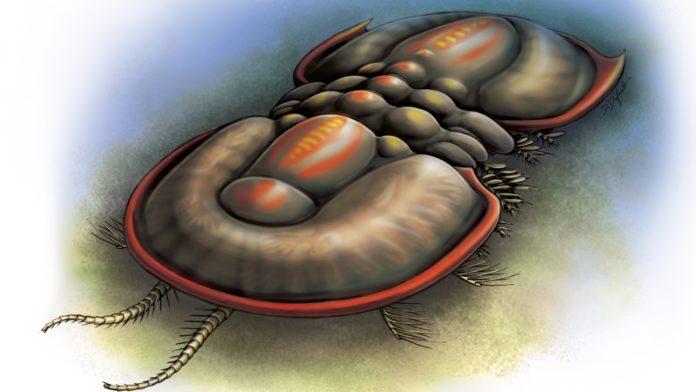The recent discovery of exceptionally preserved specimens at British Columbia’s 500-million-year-old Burgess Shale fossil deposit is rewriting evolutionary history, according to the University of Toronto’s Joseph Moysiuk, part of the discovery team.
The exact placement of agnostids in the evolutionary tree has been controversial among academics, but thanks to some of the newly discovered fossils, Moysiuk and his team believe they have enough evidence to link them to trilobites as “distant cousins”.
The research was conducted in collaboration with paleontologist Jean-Bernard Caron, also from the University of Toronto and a senior curator at the Royal Ontario Museum. Their results were published in the Proceedings of the Royal Society B.
Unprecedented soft tissue levels help connect evolutionary dots
Agnostids are bug-like creatures that lived between 450 and 520 million years ago during the Cambrian period. They are less than one centimetre in length and have an armour-plated back and head shield for protection.
This particular set of fossils contained intact soft tissue such as the nervous system, appendages, antennae, and unique digestive tract. Some of the fossils even had traces of what the agnostid last ate.
The team believe the antennae were used for sensory purposes and the appendages, described as “oar-like” in the paper, for swimming through water bodies. The authors further suggest that they may have breathed through their legs.
“They have lots of segments and this strange sort of club-like outgrowth coming off of them, which we hypothesize may have been used for respiration in these animals,” explains Moysiuk. “So they were breathing through their legs, potentially.”
The level of morphological detail available to the researchers facilitated a robust investigation into the phylogenetic placement of agnostids.
“Agnostids appear to be what we call the sister group, sort of like a distant cousin of trilobites. They are more closely related to other trilobites than other anthropods, like say, crustaceans or like arachnids, spiders and such,” says Moysiuk in an interview with the Canadian Press.

More secrets may await discovery at the Burgess Shale
Advances in our understanding of the origins of agnostids aside, Moysiuk stated that their work underlines the importance of continued research at the Burgess Shale, which likely contains many more evolutionary secrets.
The area is renowned for possessing exceptionally preserved fossils from the Cambrian Explosion – “an event which saw the rapid diversification of early animal life from simpler single-celled ancestors.”
“[The agnostid] is an animal that’s been a big mystery in terms of where it fits into the tree of life for a very long time, and so it’s always nice to fit in a little piece of the puzzle,” says Moysiuk.
“These fossils really give us this unparalleled insight into what life was like back in the Cambrian period.”






































